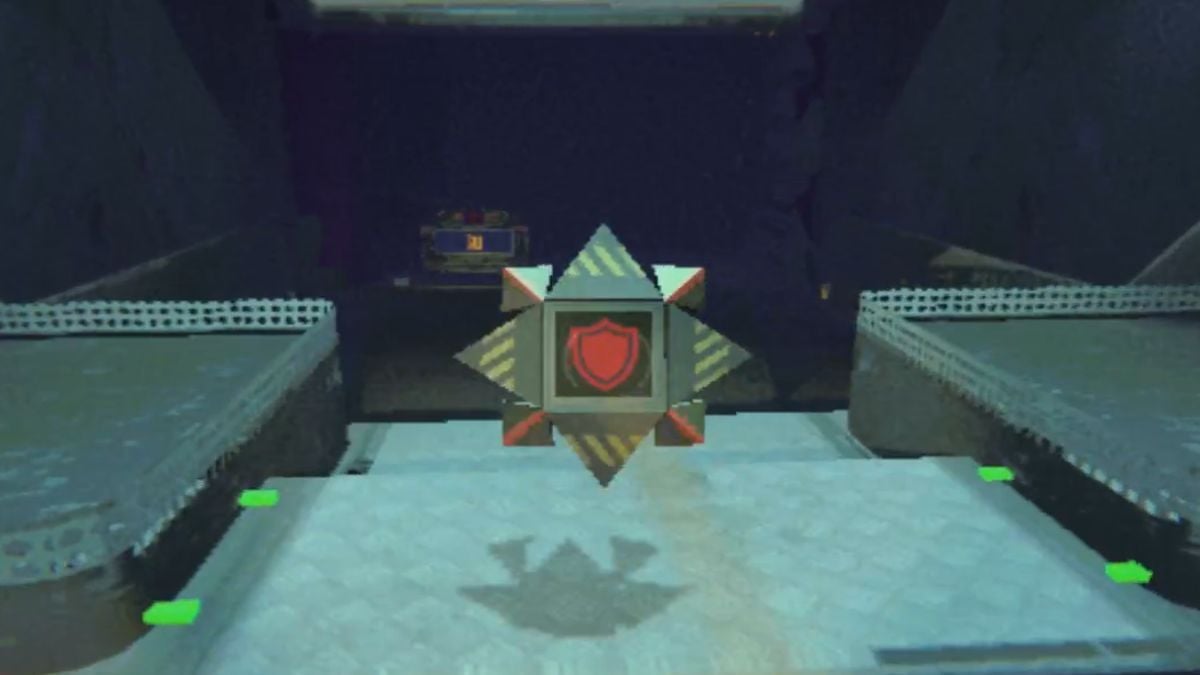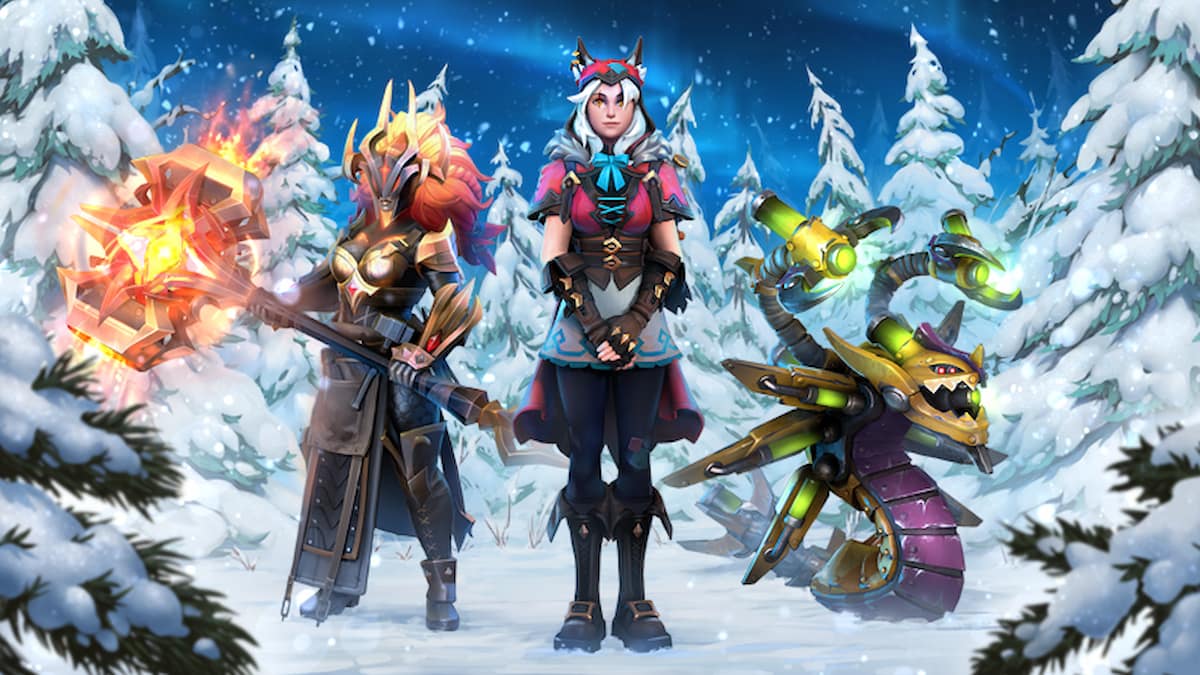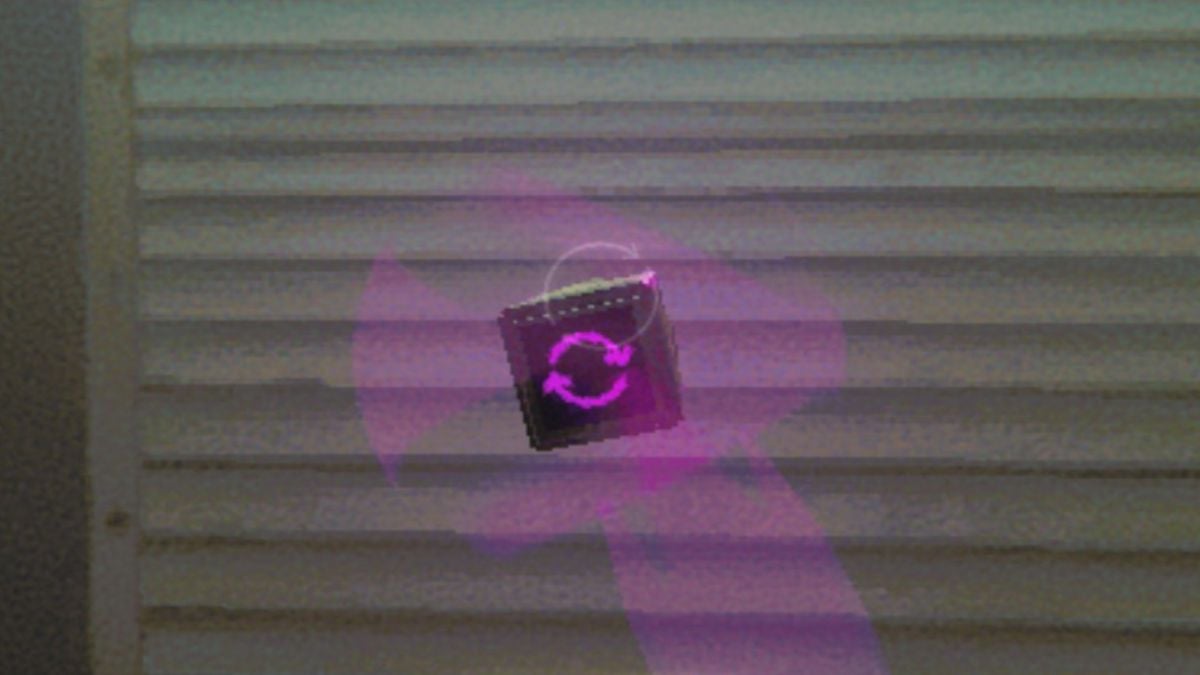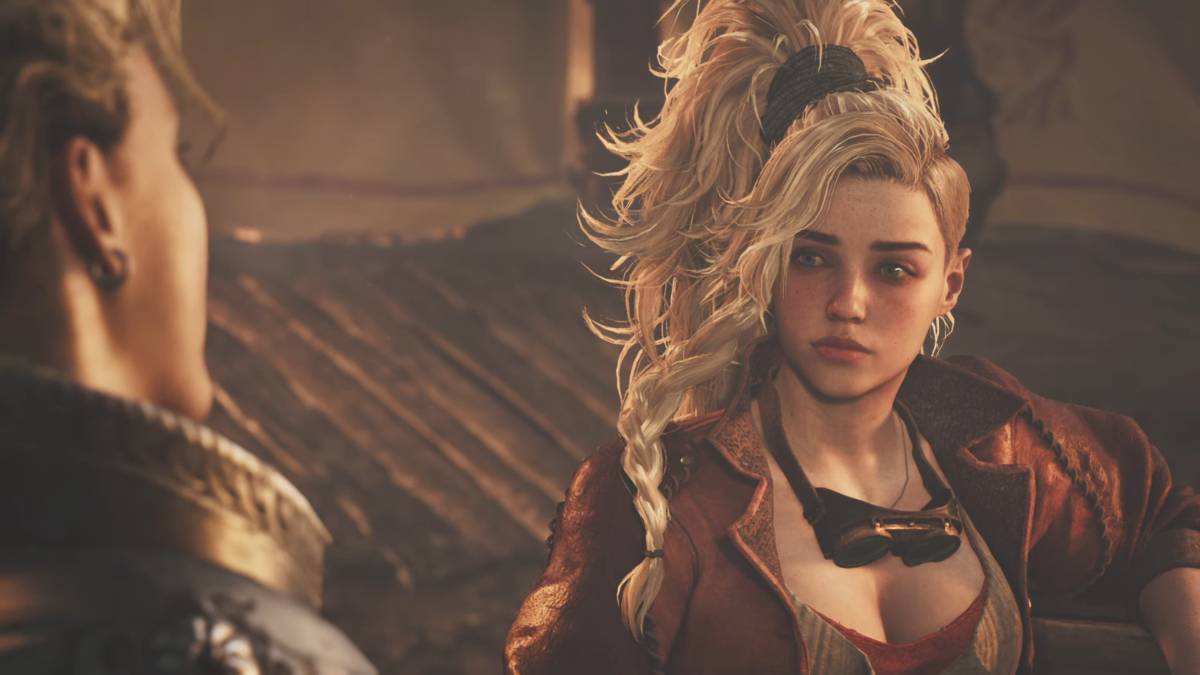
Fortnite Review - 2024
Editor’s Note: This review takes a fresh look at Fortnite in 2024, replacing our previous review from 2018. You can read more about our review policies and philosophy here.
It’s wild to think about how much of gaming culture over the last decade has been defined, at least in part, by Fortnite. This is a game that began humbly before expanding wildly into a juggernaut of an online sandbox, where somehow Aang from Avatar: The Last Airbender can crash a sports car into a Stormtrooper outpost before popping out and shooting Family Guy’s Peter Griffin with a neon assault rifle and then gliding away on a Cacodemon from Doom. But despite the absurdity of that sentence, Fortnite isn’t just a collection of branded cardboard cutouts scattered throughout a cartoony island: It’s managed to grow to this level because it’s also an enduringly fun battle royale shooter, and its momentum has been built on by season after season of updates that go all-out to pull you back in right when you thought you were done.
Whether you’re playing in Fortnite’s signature mode that allows you and up to 99 others to mine resources and then magically build structures like ramps and walls for cover on the fly, or the more traditional building-free battle royale mode that’s all about smooth moving, punchy shooting, and fun vehicles, its bounty of extra objectives, smattering of NPCs and named locations, and in-game missions set it a cut above other games in the genre. Each match starts even before the Battle Bus drops you from the sky, as you pick out a quest from dozens of different missions and objectives that infuse each of the roughly 15-minute rounds with extra purpose and direction. Maybe you want to take care of some daily missions to jump a few levels ahead in your battle pass, or maybe you want to find a specific NPC like Centurion, who can help you in battle by either selling you powerful weapons and healing items or squadding up with you to help stack up some eliminations and chase the number one spot.
Regardless of where you choose to land on the island or why, Fortnite’s mission structure cleverly guides you towards engaging with its large, interestingly laid-out map by peppering locations and quests throughout the island and naturally encouraging you to discover things off the beaten path as you run, drive, or glide from objective to objective. Stumbling upon a character who can help you hide or a vault with extra gold that you can use to buy items and services from NPCs is more rewarding than simply running to find loot and staying alive the longest within an ever-shrinking safe zone.
When you land, your priorities might immediately be influenced by a mission or even a randomly selected match quest, which prompt you to do weird things like emote at a named location or eliminate an opponent with a specific type of weapon in order to earn experience points for your battle pass. Of course, the catch is that everyone else is trying to kill you as you do this, so you have to balance it with the task of gearing up with a healing item and guns. Naturally, everyone knows the best of those items will be at defined spots like The Underworld or Doomstadt… and the fact that people know this makes those landing zones riskier to explore because you’re all but certain to run across others straddling the line between brave and stupid, which leads to scrappy, no-holds-barred showdowns. But Fortnite lets you play it safe as well, so if you prefer to land somewhere less contentious you’ll still be able to find weapons and other helpful tools like shield potions off the beaten path.
Epic isn’t afraid to mix the balance up with more creative ideas.
Either way, few players will have a fully stocked and organized arsenal at this point, making these early moments especially tense and tough unless you beat others to a treasure chest or good weapon that tips the odds in your favor. Sometimes that weapon isn’t immediately available – I’ve landed at a hotspot only to have to slowly chip away at an opponent’s health and shields with my pickaxe before I even got the chance to loot anything plenty of times. This exchange of blows is a lot slower than the gunslinging Fortnite usually expects from you, but it’s not so much bad or boring as it is a goofy byproduct of you and your opponent looking each other dead in the eye after realizing you’re both out of options and hoping you come out on top.
Thankfully, weapons are plentiful on the island, with several types designed for different situations stashed in every chest and building. The main guns are pretty typical: Assault rifles are reliable in most skirmishes, but less useful in a close-quarters encounter than a shotgun or submachine gun would be. Alternatively, the DMR and sniper rifle outpace all of those in long-range combat. However, Epic isn’t afraid to mix the balance up with more creative ideas, and so it also includes a ton of cool one-off weapons themed after its many regular events. For example, during the annual Star Wars event for May The 4th you can wield Stormtrooper blasters, Chewbacca’s bowcaster, and even a lightsaber if you get lucky and find one randomly on the map or defeat a formidable Darth Vader NPC.
These days, a nearly non-stop rotation of different crossovers bring new types of mythic weapons and tools to the table, with several additions being made specifically for one season or event before being shelved indefinitely. Logging in on a random day could land you something as silly and mundane as Peter Griffin’s Pump Shotgun (which is just a normal shotgun that deals extra damage) or as useful as the explosive Kamehameha from Dragon Ball Z and the deadly and accurate power of Waterbending from Avatar: The Last Airbender. Even when they’re especially powerful, event items and weapons are easy to come by, meaning you’re a lot less likely to lose to another player just because they had a super-powered weapon that your normal gun couldn’t compete with – that includes this season’s Marvel-themed pickups like Doctor Doom’s Gauntlets, which let you pelt opponents with powerful blasts of energy, or last season’s jet-powered Nitro Fists, which rocket you up into the air before slamming down to create a shockwave around you .
Instead, you’re more likely to lose because they’re better at building than you are. The fine art of creating structures in combat is as definitively Fortnite as it is divisive, with detractors often complaining that shooting at an opponent prompts them to explode into an instant Eiffel Tower as they turtle up and erect a sniper’s nest to shoot back from. It’s absolutely absurd, but I like that building adds a literal depth to combat that takes Fortnite’s already engaging, tense shooting mechanics and knocks the skill ceiling up a few notches as you learn to juggle the usual dance of aiming, dodging, and reloading with quickly laying down cover and managing your limited resources.
This battle royale can still be enjoyed without mastering building.
Epic has made it pretty easy to wrap your mind around the building controls, with quick shortcuts on both keyboard and controllers that make it simple to build a ramp to help climb a hill or set up a wall to defend yourself while you reload. It’s not mandatory, though: As an admittedly weak builder, I can confidently say that I’ve managed to eke out wins without much reliance on ensconcing myself in wood, stone, and metal, so it’s not like this battle royale can’t be enjoyed without mastering that skill, either. You can learn to take advantage of high fire-rate weapons like SMGs or the drum gun to quickly dismantle an opponent’s creation before sniping them through the holes you made, or just rush them down with a shotgun and take them out where they thought they were safe.
The main difference when you join a No Build match, which trades the ability to build for extra shields, is the flow and pace of combat. In the default mode, shootouts between equally matched players often last longer as both parties scramble to out-build, out-heal, and out-shoot each other in climactic moments that always push me to the edge of my seat before ending in either a frustrated groan or a sigh of relief. In No Build, combat is much tighter and leaves less room for missed shots as there are fewer places to hide. Since building takes extra cover out of the equation, these fights are also more often locked to the close quarters areas already on the map, and reward those who rush down their opponents rather than trying to snipe them from far away.
In either mode, plenty of chokepoints and events pop up randomly to force confrontations or provide an extra advantage for those willing to seize it. Maybe the train’s passing by where you landed – if you’re lucky, you can snag a ton of goodies from its chest before someone else does. From there you might head toward some NPCs that you can see in the distance, who will open fire at you with the kind of flailing aim that would make a Stormtrooper look like a deadeye. After clearing their camp, you could be rewarded with an early forecast of where the safe zone at the center of Fortnite’s deadly storm will head next, which is the kind of intel that can give you the jump on the other remaining players and be waiting when they rush to what they think is safety.
Other optional events, such as NPC bosses with substantially better aim, pepper the map and offer useful rewards and nominal challenge, but chasing those also makes your location known: echoing gunfire and the enemy’s health bar popping up on nearby players’ screens exposes you for others to swoop in and capitalize on your being distracted. Meanwhile, friendly NPCs offer something completely different: You can buy worthwhile items like guns, healing items, hints, and sometimes even disguises that are reminiscent of the popular Gary’s Mod game Prop Hunt which you can activate and use to camp out as a chair, barrel, or other piece of furniture you might find scattered around the island. You can also hire certain NPCs to help you out in a fight, which can make a difference in team-based modes where a shootout is more chaotic than just two people unloading their weapons at each other. All these options means there’s always something interesting to do beyond simply looting and shooting.
Moving around the map feels incredible, too. You can sprint, crouch while sprinting to go right into a slide (ripped straight out of Apex Legends), jump farther than normal, and even mantle while running. This may not sound like a lot compared to the aforementioned Titanfall spinoff’s acrobatic movement, but Fortnite’s current movement options are just enough to keep combat dynamic and challenging. You aren’t so mobile that fights become frustrating, but there are still cool opportunities for some daring escapes after a showdown gone awry.
There’s just a dizzying amount of things going on in every match.
And when running around on foot just doesn’t cut it, there are plenty of cars and motorbikes scattered around the island like ride-sharing scooters for you to find. Each produces a brain-ticklingly satisfying purr as you zoom around and rock out to in-game radio stations with a diverse library of licensed tracks from the likes of Lady Gaga, Bad Bunny, AC/DC, BLACKPINK, and more. Even if you’re not necessarily going anywhere specific, it’s hard to resist the thrill of jumping a car off a high bluff to get some air time backed by an energetic track, which last season not only enabled but encouraged thanks to its beefier and more customizable vehicles that would make George Miller Swoon.
There’s just a dizzying amount of things going on in every match, and because of that Fortnite accommodates so many different playstyles. Whether you’re vying for the top spot, jumping a sports car off a ramp with your friends in a parking lot, or checking off story missions, it rewards your time with XP for doing just about everything. Sure, some activities offer more points than others – being the last person or team standing at the end of a match will always be the most important objective – but Epic goes out of its way to let you have a blast even if you don’t place in the top 50.
Experience points help fill out levels in the battle pass, which has both a free and paid tier and unlocks various cosmetics like skins for your character, weapons, pickaxe, and glider, as well as provides some in-game currency, called V-Bucks. That battle pass and its rewards have all but set the standard for how free-to-play games turn a profit, and while it’s fun to unlock outfits that let me dress up like Kratos from God of War or Indiana Jones, I don’t like how commonplace the almost compulsive nature this monetization strategy encourages has become.
Microtransaction Reaction
Microtransactions make the multiplayer world go round, and the free-to-play Fortnite is no different. Its monetization strategy is relatively inoffensive compared to other battle pass-driven games when you look at it in a vacuum, as it can be actually completed without any real-money buy-in, but it takes advantage of its notably young audience with a store set up in a way that still feels pretty uncomfortable.
Fortnite’s shop is explicitly designed to encourage impulsive buying thanks to its false scarcity. The skins and other cosmetics you have the option to purchase arbitrarily rotate, limiting their availability if you aren’t always checking in – some popular options do show up in the shop more frequently, but with months between each seemingly random pop-up, it’s an obnoxious system if you are just looking to buy one item you are interested in. Most individual skins will run you anywhere between 1,000 and 2,000 V-Bucks (roughly USD $10-20), but character packs that come with emotes, backpacks called Back Bling, a skin, a harvesting pickaxe or other similar tool, and a glider can set you back much more, with most multi-skin packs costing at least 3,000 V-Bucks.
Let’s say you want to earn The Battle Pass itself without buying into Fortnite. At 950 V-Bucks, it’s easily the best low-cost option to beef up your skin library, but with each season’s free Battle Pass tier typically netting you 300 V-Bucks, you’ll need to reach level 100 in at least 3 separate seasons and earn at least one V-Bucks unlock in a fourth. With each season lasting around ten weeks a pop, it would take you the better part of a year – about ten months – before you could unlock a Battle Pass for free. At that point, Epic’s earned your $10 whether you like it or not.
I did this grind over the course of about three or four years, hopping back in when friends wanted to play or a specific event seemed cool and collecting a few V-Bucks here and there. It’s not super difficult to reach a high level on the Battle Pass since each week offers new quests with most being fairly doable within a handful of games, but it’s still demanding as it asks you to come back for a couple of hours back week after week. And much like the Item Shop’s false scarcity, most Battle Pass unlocks will never be available for purchase after the season is over.
Thankfully, Fortnite doesn’t lock anything that impacts the actual gameplay of a match behind premium purchases, and even allows you to earn enough V-Bucks to purchase optional skins through grinding alone. With years of big crossovers under its belt, the store has become a modern gallery of sorts. Painstakingly created emotes that replicate moments from rich and influential works like Alien, Metal Gear Solid, Marvel, and Star Wars are immortalized next to silly bits of internet culture ranging from the Orange Justice dance to the Stonks meme. Fortnite is the only place where you can see Darth Vader throw up a Wu-Tang W and rock out to C.R.E.A.M., or taunt other players with John Cena’s iconic “You Can’t See Me” gesture as Goku. It’s by no means the museum-quality homage to its source material the way the Super Smash Bros. series is to Mario, Zelda, or Donkey Kong, but it’s an impressively curated collection of culture all the same.
The Indiana Jones content from Chapter 3, Season 3 in the Summer of 2022 is a great example of how Fortnite often makes its crossovers feel like more than just a cosmetic cash grab. Its special limited-time mission asked you to explore the ruins of an ancient temple and find four runes, then organize the same symbols to open a door to a long corridor with a ton of loot at the end and a golden figure on a pedestal… but pilfering the idol will have exactly the result you expect. It’s not just for show either: You could die from attempting that heist.
It’s impressive that such an iconic movie moment can be so seamlessly integrated into a completely unrelated game without missing a beat. Not every crossover gets a location on the map or special mission like this, but most will at least see some kind of cool inclusion like an emote and a skin or two that lovingly capture a character’s image and presence within Fortnite’s cohesive, cartoony style. For example, last season added Fallout’s iconic Brotherhood of Steel T-60 Power Armor to the mix, which worked perfectly in its Mad Max-like apocalyptic wasteland. Somehow the T-60, Darth Vader, the Teenage Mutant Ninja Turtles, and Jill Valentine all look right at home next to one another, as if they were action figures on a shelf.
It’s a showcase of Unreal Engine 5’s high-fidelity lighting effects.
With Unreal Engine 5 powering everything, it’s no surprise that they look as good as they do: waving fabrics, shiny metals, and a bold cel-shading style adorn these skins with a punch that hits the sweet spot between cartoonish and hyper-detailed. Even on the less powerful Nintendo Switch, Fortnite runs surprisingly well with a mostly steady framerate and consistent look – though that comes at the price of a really low draw distance, making anything but a small spec of movement hard to sus out from even moderately far away. Of course, on other consoles and PCs, it runs like a dream. It’s also a graphical showcase with Unreal Engine 5’s high-fidelity lighting effects on full display as the time of day changes, bathing its levels in harsh sunlight, golden evening rays, and glowing street lights.
Most of the skins you unlock in battle royale transfer over into the other games found within Fortnite’s main menu, each of which is chock-full of its own stuff to do. Lego Fortnite, for example, is a full-scale Minecraft-style co-op survival game with its own story and quests to explore and complete, while Fortnite Festival harkens back to the days of Rock Band. Even if I wasn’t as interested in playing them, it’s cool that the shared battle pass and cosmetics make your efforts in one impactful to the others.
There’s also a staggering amount of stuff that other players have made within Fortnite, and opening up the infinite tunnel of user-generated content reveals even more fun to be found. Like any game with creative tools that allow you to share your work, it’s a literal mixed bag here with Epic Games’ curation efforts doing some heavy lifting to help the cream rise to the top. One of my favorite user-generated game modes serves as a firing range of sorts that lets you try out any version of each weapon available in Battle Royale with unlimited ammo. But there’s tons of other stuff, with whole worlds inspired by games like Phasmophobia that are so popular they have their own followings on Twitch.
Somehow, nearly all of these disparate ideas work together seamlessly, with only a few exceptions for what you can bring where depending on what mode you’re playing – for example, you can only wear the Xenomorph skin in game modes with a “T for Teen” ESRB rating or higher – but most carry over, which makes even the fun diversions from the battle royale grind feel worth your time.
That said, Fortnite’s wide range of universes don’t always collide gracefully. Watching characters who would never wield a gun – let alone kill someone – do both of those things in Fortnite is equally silly and a bit gross, because it often completely betrays the defining characteristics of their source material. No matter how funny it is to see Batman unload a clip into his foe before hitting The Griddy, it just doesn’t feel right.
By cementing itself as the place for titans of various mediums and industries to cross over, Fortnite has transformed into more than just a game, whether we like it or not. It’s become the modern water cooler, as both a shared social space and the kind of rare cultural monolith that helps create connections thanks to its seamless crossplay and built-in voice chat – which is so well-supported it’s even one of the very few games that supports native voice chat on the Nintendo Switch. Playing on Xbox, I can easily squad up with my roommate on his Switch in the same room and my buddy playing on his PC across the country without a hitch, which is truly impressive given how much trouble some other games can have with that sort of setup.







